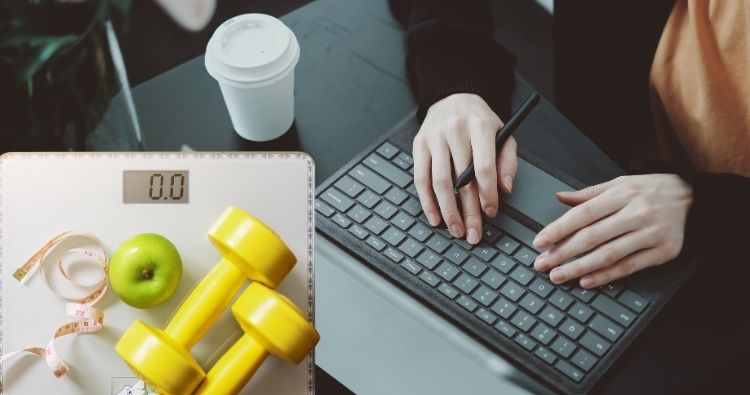If you’re trying to lose weight, you know that it’s important to track your progress in more ways than just stepping on the scale. One crucial aspect of tracking your weight loss journey is taking accurate body measurements. How to Take Body Measurements for Weight Loss. Taking body measurements can help you identify changes in your body shape and size, even if the number on the scale doesn’t seem to budge.
Accurately tracking your body measurements can also serve as motivation, as you can see progress that might not be reflected in your weight.
However, taking body measurements can be tricky, especially if you’re not sure where to start.
In this blog post, we’ll walk you through the five essential steps for taking accurate body measurements for weight loss or How to Take Body Measurements for Weight Loss.
We’ll explain which body parts to measure and how to properly take those measurements, as well as offer tips for ensuring consistency and accuracy.
By following these steps, you’ll be able to accurately track your progress and stay motivated on your weight loss journey.
So let’s get started!
-
Measure your neck circumference

Taking body measurements is an essential aspect of weight loss tracking.
Accurately measuring your body can help you to monitor your progress and ensure that you are on track toward your fitness goals.
One of the most important measurements you should track is your neck circumference. Measuring your neck circumference can help you to assess your risk of health conditions, such as sleep apnea, cardiovascular disease, and high blood pressure.
To measure your neck circumference for weight loss, use a tape measure and wrap it around your neck just below the Adam’s apple.
Make sure to hold the tape measure snugly, but not too tight, against your skin.
Write down your measurement and repeat it a few times to ensure the accuracy of your results.
Make sure to take measurements regularly to track your progress accurately!
-
Measure your waist circumference
Taking accurate body measurements is essential for determining if you are making progress towards your weight loss goals.
One critical measurement to track is your waist circumference. This measurement can give you a good indication of how much harmful belly fat you are carrying.
To start, use a measuring tape to measure around your waist at your navel level. Try to keep the tape level and not too tight or too loose.
Record the measurement, and remeasure regularly, at least once a month, to track your progress.
How to Take Body Measurements for Weight Loss should be a crucial part of your weight loss plan.
Measuring your waist circumference is just one of the five essential steps to monitor your body measurements effectively.
By following these steps and keeping track of your measurements, you can ensure that you are on the right track, making progress towards your weight loss goals.
-
Measure your hip circumference

One important step in learning how to take body measurements for weight loss is measuring your hip circumference.
This measurement is essential because it helps you track progress in losing fat around your hips, which is important for overall weight loss.
To measure your hip circumference, stand straight with your feet together and place the measuring tape around the widest part of your hips and butt.
Make sure the tape is level and parallel to the floor.
Record the measurement in inches or centimeters, and take note of it for future reference.
Measuring your hips regularly will help you see changes in this area and make necessary adjustments to your diet and exercise routine.
-
Measure your arm circumference
When it comes to weight loss, tracking your progress is important. Body measurements are one way to measure your progress and can be more telling than simply stepping on the scale.
One of the measurements you should take is your arm circumference. To do this, grab a measuring tape and wrap it around the middle of your upper arm, making sure the tape is parallel to the ground.
Don’t pull too tight, but make sure it’s snug against your skin. Take note of the measurement, and be sure to measure both arms to make sure you’re maintaining symmetry.
Measuring your arm circumference can help you track changes in muscle tone and fat loss in your arms, which can be a great motivator and indicator of progress in your weight loss journey.
-
Track your body measurements regularly for progress

Taking body measurements is one of the most effective ways to track your progress during your weight loss journey.
By tracking your body measurements regularly, you will be able to see changes in your body composition that the scale alone cannot reveal.
To start, take measurements of your waist, hips, chest, arms, and legs using a flexible tape measure. Record these measurements in a journal or spreadsheet so you can easily track your progress over time.
It is important to take measurements in the same location and under the same conditions each time you measure, such as wearing the same clothing or measuring first thing in the morning before eating.
By following these steps for taking body measurements for weight loss, you can better track your progress and stay motivated towards achieving your weight loss goals.
Final Thought:
In conclusion, taking body measurements is an excellent way to track your progress during weight loss.
By following these five simple steps, you can ensure that you’re consistent, accurate, and precise in measuring areas like your waist, hips, and arms.
It’s important to keep in mind that losing weight takes time and effort, and taking regular body measurements can give you the motivation to stay on track and make the necessary adjustments to your diet and workout routine.
So start measuring today and see the progress you can make towards your weight loss goals!
FAQs: How to Take Body Measurements for Weight Loss

Question 1: Why is it important to take body measurements when aiming for weight loss?
Answer 1: Taking body measurements is crucial for weight loss because it provides a more comprehensive understanding of your progress beyond just weighing yourself. Measurements help you track changes in your body composition, such as losing fat and gaining muscle. How to Take Body Measurements for Weight Loss Additionally, they serve as a motivational tool, allowing you to see tangible improvements even if the scale doesn’t show immediate results.
Question 2: What are the essential body measurements to track during a weight loss journey?
Answer 2: The essential body measurements to track during a weight loss journey include:
Waist circumference: Measure the narrowest part of your waist, usually above the belly button. This measurement helps determine changes in abdominal fat, which is associated with various health risks.
Hip circumference: Measure the widest part around your hips and buttocks. Tracking this measurement is particularly useful for monitoring fat distribution changes and overall body shape.
Chest or bust circumference: Measure around the fullest part of your chest or bust. This measurement is essential for both men and women, as it indicates changes in upper body composition.
Thigh circumference: Measure the widest part of each thigh. This measurement helps you monitor changes in muscle mass and fat distribution in the lower body.
Arm circumference: Measure the widest part of each upper arm. Tracking arm measurements helps assess changes in muscle size and tone.
Question 3: How often should one take body measurements for weight loss?
Answer 3: It’s recommended to take body measurements every four to six weeks during a weight loss journey. This timeframe allows for enough time to see noticeable changes while still providing a reasonable interval for tracking progress. How to Take Body Measurements for Weight Loss, Taking measurements too frequently can lead to unnecessary frustration, as changes may not be immediately apparent.
Question 4: What is the best technique for accurate body measurements?
Answer 4: To ensure accurate body measurements, follow these techniques:
Use a flexible tape measure: Invest in a flexible tape measure made of fabric or plastic. Avoid using metal tape measures or rulers, as they may not conform to your body’s curves accurately.
Measure at consistent locations: Always measure the same anatomical landmarks for each body part to maintain consistency and accuracy.
Stand straight and relaxed: Stand with good posture, keeping your muscles relaxed during measurements. Tensing your muscles can lead to inaccurate results.
Take multiple measurements: To ensure accuracy, take two to three measurements for each body part and calculate the average.
Record measurements: Keep a record of your measurements in a journal or digital tracking app for easy reference and comparison over time.
Question 5: How can body measurements be used to adjust weight loss strategies?
Answer 5: Body measurements can be used to adjust weight loss strategies in the following ways:
1. Identifying plateaus: If the scale doesn’t show significant changes but your body measurements indicate progress, it’s a sign that you’re losing fat and gaining muscle. How to Take Body Measurements for Weight Loss This insight can motivate you to continue with your current plan rather than giving up due to misleading scale readings.
2. Adjusting workouts: Changes in body measurements can indicate whether your exercise routine is effectively targeting specific areas. For example, if your waist measurement decreases while your thighs remain the same, you may need to adjust your exercises to target the lower body more effectively.
3. Evaluating dietary choices: Body measurements can help you assess the effectiveness of your dietary choices. If you notice that your measurements are not changing as expected, How to Take Body Measurements for Weight Loss it might be time to review your nutrition plan and make adjustments to support your weight loss goals.
4. Setting realistic goals: By tracking your body measurements, you can set realistic goals based on your body composition changes rather than solely focusing on weight loss. This approach ensures that you’re striving for overall health.
Read more informative article
How to Restart Weight Loss After Gastric Bypass: 7 Tips
How to Measure Weight Loss: What You Need to Know
How to Use Linzess for Weight Loss: A Surprising Solution
How to Make Black Coffee for Weight Loss: The Ultimate Guide










Leave a Reply